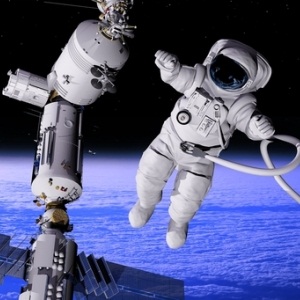
Astronauts face long periods of immobility, as do bedridden patients, with similar loss of bone strength.
Read: Link between heart failure and osteoporosis
"This is an important but under-recognized issue for bone health," said Professor René Rizzoli, chairman of the IOF Committee of Scientific Advisors, chairman, the IOF World Congress on Osteoporosis Scientific Committee. "Bone is a living tissue, and must be 'stressed' to maintain strength. If bones are immobile for long periods, as occurs in space but also in bedridden patients, the individual will lose a substantial amount of muscle and bone mass, which may have serious repercussions."
Mechanical stimulation
"Bone loss in space is one of the major obstacles to long duration missions such as a voyage to Mars," added Dr. Nicole Buckley, Director for Life and Physical Sciences at the Canadian Space Agency (CSA). "What we learn about bone loss in space helps better understand osteoporosis, a very serious medical problem on earth."
Read: No evidence vitamin D is good for bones
In a WOD publication, IOF noted, "We cannot depend on gravity alone to provide the mechanical stimulation that builds bone and prevents bone from wasting away – exercise also plays a key role. The publication cited an experiment in which "terranauts", who spent three months lying flat and not doing any exercise, lost up to 15% of their bone mineral density.
According to NASA, crew members engage in physical exercise for two and a half hours a day, six times a week (fifteen hours a week) while in orbit to avoid these issues. Nevertheless, the risks of these problems occurring cannot be completely eliminated through physical exercise alone.
Bisphosphonate is a therapeutic agent that has been used to treat osteoporosis patients for more than a decade, with a proven efficacy to increase bone mass and decrease the occurrence of bone fracture. Through 90-day bed rest research on Earth, we confirmed that this agent has a preventive effect on the loss of bone mass.
Based on these results as well as studies conducted by others, JAXA and NASA decided to collaborate on a space biomedical experiment to prevent bone loss during space flight. Dr. Leblanc, USRA, and Dr. Matsumoto, Tokushima University, are the two principal investigators of this study.
Read: Excess fat ups osteoporosis risk
Osteoporosis, in which the bones become porous and break easily, is one of the world's most common and debilitating diseases. The result: pain, loss of movement, inability to perform daily chores, and in many cases, death.
One out of three women over 50 will experience osteoporotic fractures, as will one out of five men 1, 2, 3. Unfortunately, screening for people at risk is far from being a standard practice. Osteoporosis can, to a certain extent, be prevented, it can be easily diagnosed and effective treatments are available.
Read more:
Vegetarians, boost your bone health
9 fast facts about osteoporosis
Osteoporosis increase in African women
Image: Astronaut in space from Shutterstock
Additional Source: NASA




 Publications
Publications
 Partners
Partners














